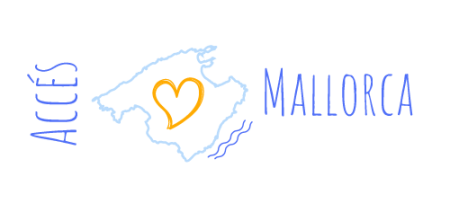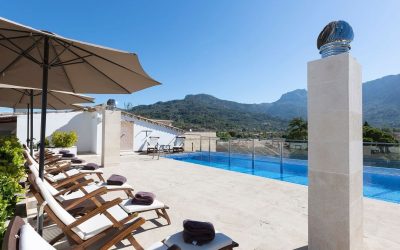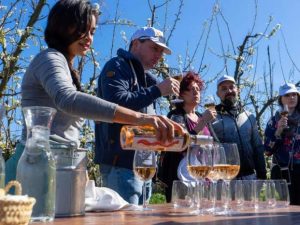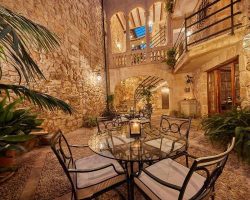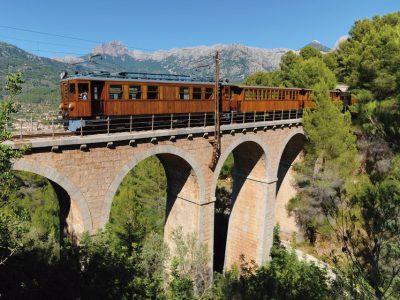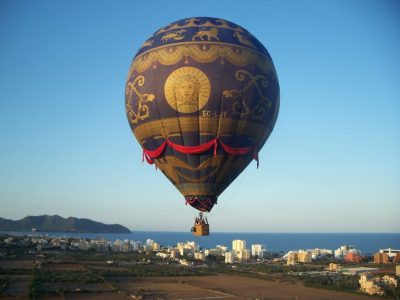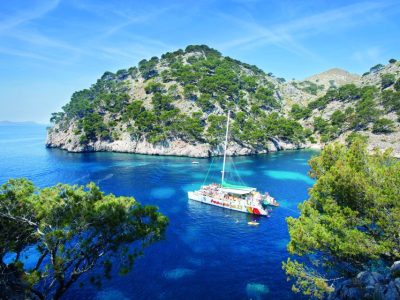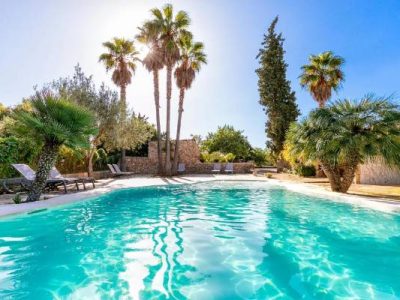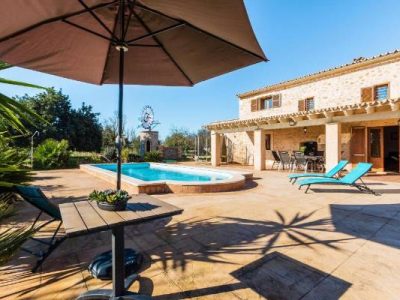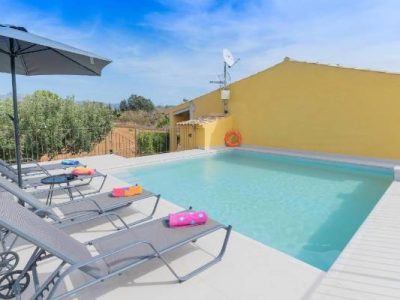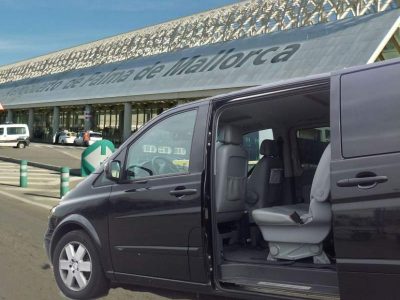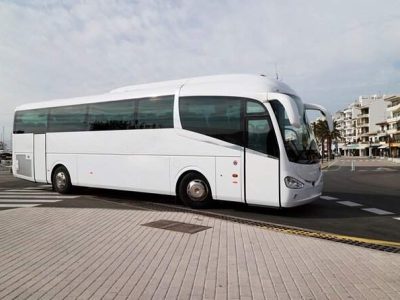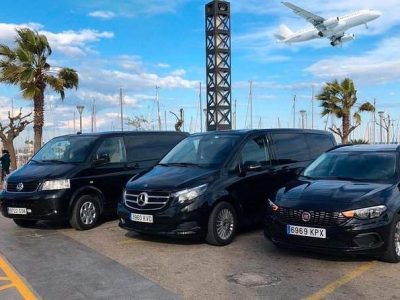All your holiday planning needs in one place, letting you book direct and benefit from official online rates
- Places To Go
- Things To Do
What’s Your Interest?
Traveling with kids
- Blog
Búger, Mallorca, Things to do and see, hotels, market
With its many windmills, rustic surroundings and beautiful gardens, Búger is the perfect getaway for any nature lover with a penchant for village idyll.
Búger is one of Mallorca’s smallest villages, with just under 1000 inhabitants. In turn located centrally in relation to all types of outdoor activities on the island.
- This is where I want to go!
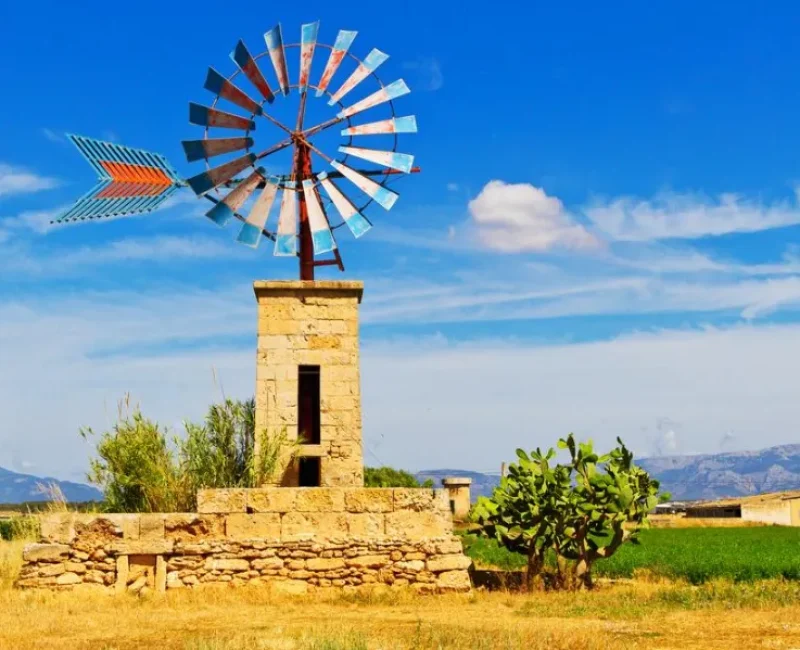
Is Búger worth visiting?
Things to do in Búger
DISCOVER THE TRANQUIL VILLAGE
The first thing to do is to stroll about in the cosy streets of Búger and discover some of the local places of interest. You can start your itinerary down by the town hall in the western part of the village. Here you will find a beautiful fountain which represents the name of the village as the name Búger derives from the word light. This place is called Plaça de la Constitució (Square of Constitution), which refers to the municipal Independence acquired in 1812 thanks to the Spanish Constitution. The town hall building is worth a photo too, a typical Mallorcan house made in Regionalism style. Move up the main street and notice the sculptures in the facades, these are the old village borders. Finally, visit the parish church at the end of the street and enjoy a refreshment at one of the bars.
OLD VILLAGE BORDER MARKS
Búger has preserved its old town crosses that during the Middle Ages marked the borders of the town.
On Fat Thursday, a procession follows the route of these crosses.
The two crosses on Carrer Major (11 & 20), are the most well-preserved. According to the Archduke Ludwig Salvator, the crosses are described as “Near the church, at the wide street, the presence of two new stone crosses on a base like a ball”. The crosses are carved into the building walls.
In other towns and villages on Mallorca, these stone crosses are often much larger, and standing on an octangle stone base.
VISIT THE CAVES OF CAMPANET
One of the main attractions in this area, is the Cuevas de Campanet, amazing caves of stalactites and stalagmites formed throughout thousands of years. There are guided tours that will illuminate the fascinating aspects of these caves and take you throguh some of the most imposing chambers inside the mountain. Cuevas de Campanet is found just a 10 minute drive from Búger.
VISIT THE ART MUSEUM OF CAN PLANES
In the neighbouring town of Sa Pobla you will find an amazing manor, the Can Planes, home to some very interesting exhibitions. There are several exhibitions inside, some are changing, others are permanent. Among the permanent exhibitions, you can enjoy the wonderful collection of antique toys, the contemporary arts collection, the artworks of plastic and the exhibition dedicated to the story of Sant Antoni and the devil. Can Planes offers a range of activities such as workshops and other events with the purpose of promoting artistic creativity. While in Sa Pobla, don’t forget to try one of the many wonderful cellers in the town.
VISIT THE ETHNOLOGICAL MUSEUM OF MURO
Another of Búger’s neighbors is the charming village of Muro found about 10 minutes from here. In Muro, you will find one of the island’s greatest ethnological museums that showcases the history of the island through interesting collections from the late Middle Ages. You will learn about production of pharmaceuticals, about the household of regular families, production techniques and much more. The museum is free to visit everyday.
FAQ
Búger is located approximately 43 km (~27 miles) from Palma airport. The transfer time by car or taxi is about 35 minutes.
A taxi from the airport will cost about 55 euros.
If you prefer a more comfortable transfer, consider an air-conditioned private minibus. Book here
The weekly market in Búger is held every Saturday morning, starting around 8 am.
Market and Events in Búger
Weekly market in Búger
Saturday morning from around 8 o’clock, the weekly market in Búger is held. The market is a traditional farmers market, where you can find wonderful fresh local products such as meats, cheeses, vegetables, fruits, nuts, herbs, oils etc. There’s also an opportunity to find some typical Mallorcan crafts and painted ceramics, which are very decorative and popular to bring home.
Events and festivities in Búger
May
Fira es Jai
Fira es Jai is held the first weekend in May.
The weekend offers a variety of fun and cultural activities, such as exhibitions, market, agricultural fair, as well as various performances with traditional dances and music.
Another highlight of Fira es Jai is a giant ensaïmada (Mallorcan pastry) baked and shared between visitors. In addition, a tapas route is arranged so that visitors can taste the local gastronomy.
Fira es Jai is a glorious May party that puts you in touch with our all-together roots.
June
Festes Sant Pere
The annual town festival in Búger is held in honor of the town’s patron saint, Sant Pere (Saint Peter). The festivities start on June 29, the day of Sant Pere, and typically last a week. During this festival week you can experience exhibitions, games, competitions, workshops, market, activities for children, performances with traditional Mallorcan folk dance as well as xeremiers, Mallorcan bagpipes.
September
Festa de la Mare de Déu de Lloseta
The first week of September, a major city party is held in Lloseta in honor of the city’s patron saint, the Virgin Mary.
Throughout the week, a number of fun activities and cultural events are arranged that make the party interesting for all ages. The streets are decorated with colored ribbons, there are competitions, games, exhibitions, market, guided tours and of course lots of entertainment in the form of traditional folk dances and music concerts.
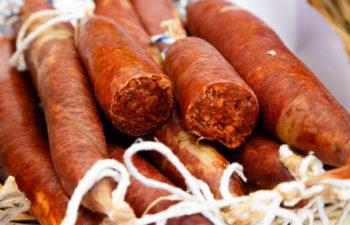
Support Local
Supporting local communities during your travels can have a profound impact. Stock up with groceries locally, stop in an artisan shop or enjoy a refreshment at a restaurant or bar. Now more than ever, these small businesses need support from travelers near and far.
Get to know the area and history of Búger
About Búger
Búger is a pastoral village with about 1,000 inhabitants. Unlike many other areas of Mallorca, Búger is still depending on its agriculture as its main source of income.
History of Búger
The area of Búger has been inhabited by humans since prehistoric times. The caves of Can Mossenya found on the slopes of the Sa Mata Grossa hill, is a clear evidence of the human occupation in the area. There is also evidence of human occupation dating back from the talayotic cultures found at the Rafal des Puig.
The location of the area close to the main road between Palma and the former Roman city of Pol-lentia suggests that the Romans could have very well been cultivating the area.
However, it was during the Islamic dominance of Mallorca that the area started to prosper thanks to the watering systems introduced by the Moors that allowed irrigation and the cultivation of crops, vegetables and fruits. During the Islamic period, the area of Búger belonged to Inca, or Inkan, as it was known as at that time.
In the time after the Catalan conquest of Mallorca (1229 – 1232), Búger was part of an area that included Campanet, Ullaró and Sa Pobla. In the beginning of the 14th century, Sa Pobla obtained its independence due to a fast growing congregation, and in 1368 Campanet was constituted as municipality.
The next centuries, Búger grew and developed as an agricultural community. However, in the beginning of the 16th century there was a setback. Mallorca saw a small revolution started by artisans, who were tired of the massive tax load from the king of Aragon, as well as the corruption among the nobility. The rebellion group grew quickly and peasants of Búger soon joined, along with peasants from most other areas on the island. The king, however, did not tolerate this behavior and sent an army of nearly 3,000 men to Mallorca to deal with this issue. It took about two years of fighting before the rebellion group faced their final defeat against the trained soldiers, and the rebellion’s leaders were imprisoned and later hung in the Bellver castle in Palma.
Again in 1666, Búger faced persecution due to dissatisfied peasants who felt poorly treated. This again led to struggles and fights, however, not as violent as the prior.
The congregation of Búger fought for centuries to become their own independent parish, but failed due to resistance from Campanet. In 1579, however, a chapel was erected in Búger for religious services. But it wasn’t until the beginning of the 18th century, after more years of turbulence, banditry and plague, that Búger again started to grow and prosper from agriculture and horticulture. In 1718, vicar Paires Estrany managed to convince the bishop to let a new church erect in Búger.
At the end of the 18th century, Búger saw even more increase in income due to demand and trade, which meant that several properties such as on Alemany, Son Trascó, Son Genet and others were expanded and enhanced. Now Búger started to form an urban nucleus, as employment on these farms accelerated.
Reforms of liberalism in the 19th century finally led to independence in 1812, thanks to the Spanish Constitution, although ecclesiastical independence wasn’t achieved until about 100 years later in 1913.
Today, Búger still relies on agriculture and horticulture as its main source of income. Tourism has not yet done its entrance in the area, although a few charming finca hotels has been established.
History of Lloseta
The first vestiges of human habitation in the area dates back to the pretalayotic period (about 2,500 BC), from which 5 camps, 4 burial sites and 1 fortification has been excavated.
Following the Catalan conquest of Mallorca (1229 – 1232), king Jaume I gave the area to the viscount of Bearn, Guillem de Montcada, who distributed it among his own knights. At that time, the area had two farms; Lloseta and Aiamans, both part of the Juz d’Canarossa, a Muslim district that also included Binissalem.
Lloseta remained a small community up through the Middle Ages, in the end of the 17th century (1697) a cadastre concluded a total of 300 inhabitants.
During the War of Succession, the count of Aiamans, Miquel Joan Ballester Togores, took part in favor of the Bourbon side. He and the family of Sales, owners of the Son Pelai estate, organized armed troops to defend the coastline of Sa Porrassa and Santa Ponça against troops of Felipe V, along with men from Binissalem. The victory of the Bourbon side meant that the count of Aiamans became an important counselor for the council of Palma.
Up until the Spanish Constitution in 1812, Lloseta belonged to the municipality of Binissalem.
From the beginning of the 20th century, Lloseta grew as an important distribution center for coal and limestone, this can be seen in the old loading station next to the railway station. The areas of Selva, Biniamar and Lloseta were all supplying coal and limestone to the rest of the island, and the railway connection of Lloseta made it possible to distribute.
However, mining was not the only industry in Lloseta in the 20th century, shoe production also gave employment to many people. The increasing occupation made Lloseta a more attractive area to live, and so, in the last half of the 20th century the population was about 4,500 inhabitants.
Practical Info
Useful Numbers
Emergency: 112
National police: 091
Local police: 092
Guarda civil: 062
Fire: 080
Maritime emergencies: 900 202 202
Town Hall: +34 971 516 146
Public Transport
Bus lines: 333
Power Supply
220V
